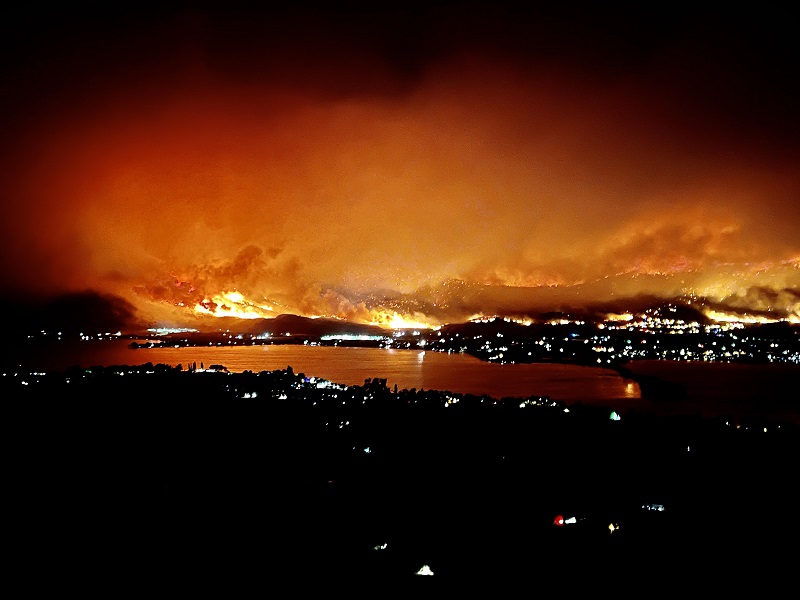What it would take for Osoyoos wildfires to become a Cat

Winds diverting a wildfire burning near Osoyoos, B.C., may have prevented a Cat-level event for the industry, adjusters tell Canadian Underwriter.
A raging wildfire scorched 40 square kilometres of land and destroyed several structures in Washington, U.S., before jumping the border and burning another 14 square kilometres, three homes, and one building in Osoyoos, B.C.
Fortunately, favourable northwest winds have helped changed the direction of the fire, but the blaze remains out of control. Residents are being instructed to leave should the blaze escalate.
“It’s a scary scene, for sure, with the entire hill above the town on fire,” Michael Jobson, regional vice president of British Columbia and major and complex loss at Sedgwick, told CU on Monday. “Also, it appears the wind did change direction, but with that area in the valley it could turn again in a second and head back towards town.”
Osoyoos B.C. is situated in the Okanagan Valley region and is home to 5,000 residents.
Favourable winds in #Osoyoos tonight as the #BCWildfire continues to burn uphill and away from the community.
The forecast on @GlobalBC News at 11. pic.twitter.com/WZv6bC30zo
— Jordan Armstrong (@jarmstrongbc) August 1, 2023
Two thousand and ninety-four properties were placed on evacuation alert and more than 700 properties were evacuated over the weekend and Monday.
Only 192 remain under evacuation order, Anita Paulic, director of operations and catastrophe response at ClaimsPro, tells CU.
“We have been closely monitoring the fire over the weekend, but it is still quite early to have a clear understanding of the damages and effects of the fire,” Paulic said.
Sedgwick said many factors are at play in considering when adjusters eventually respond to the Osoyoos insured damages.
But the winds that quelled the wildfire may have diverted a near Cat-level event, Jobson said.
“If the town gets hit, it’ll be bad, like Fort McMurray, and it’s dependent on what burns down for buildings and more importantly businesses,” said Jobson.
If the fires — which are still classified as out of control — hit businesses, insurers would be facing high claims volumes, Jobson warned.
“If restaurants, hospital(s), hotels, and grocery stores are affected, it’s much worse, as the community won’t open until there is infrastructure in place to accommodate the people moving back in.”
Nonetheless, insurers may see business interruption (BI) claims come through.
“Most [BI] policies have a requirement that the fire damaged buildings…within a certain kilometer radius of their business,” Jobson said. “Some have coverage for evacuation but it’s limited to two weeks, so there is quite a bit to read through before you can really comment completely on the impact a fire like this would happen.
“Over the summer, I’ve already seen a great number of fires affect communities that are evacuated and businesses closed down, but they have no business interruption coverage, since the fire didn’t hit the required limits to trigger coverage,” Jobson added.
As it stands, insurers will likely see additional living expense (ALE) claims from evacuated residents.
“Homeowners can remain in evacuation for four days before making an evacuation claim with their insurer,” said Paulic.
An evacuation order for more than 700 properties was issued for the Town of Osoyoos after an out-of-control wildfire crossed into British Columbia from Washington. The Eagle Bluff wildfire is seen burning from Anarchist Mountain, outside of Osoyoos, B.C., in a Saturday, July 29, 2023, handout photo. THE CANADIAN PRESS/HO-Melissa Genberg.







